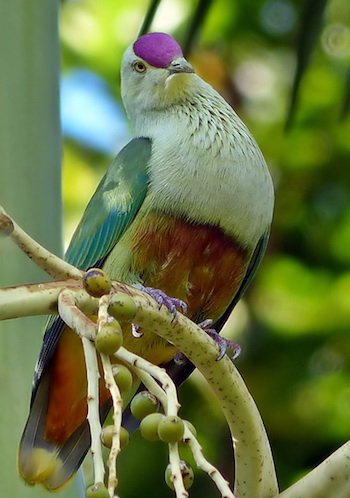Republic of the Marshall Islands

The Marshall Islands is a Micronesian nation of islands in the middle of the Pacific Ocean, just west of the International Date Line and just north of the Equator. The islands sit atop ancient submerged volcanoes rising from the ocean floor, about halfway between Hawaii and Australia.
This nation of over 40,000 people is located north of Nauru and Kiribati, east of the Federated States of Micronesia, and south of the US territory of Wake Island (to which it lays claim). It is situated in about 470,000 km2. (180,000 square miles) of the Pacific. The largest atoll with a land area of 16 km2 (6 square miles) is Kwajalein. It surrounds a 1,700 km2 (655-square-mile) lagoon. The capital and largest city is Majuro, home to approximately half of the country’s population.
The country consists of 29 atolls (24 of which are inhabited) and 5 isolated islands. The most important atolls and islands form two groups: the Ratak Chain and the Ralik Chain (meaning ‘sunrise’ and ‘sunset’ chains). The Marshall Islands also lays claim to Wake Island, administered by the United States, under the name Enen-kio. The uninhabited atolls are: Ailinginae Atoll, Bikar (Bikaar) Atoll, Bikini Atoll (because of nuclear contamination as it was an atom bomb test site), Bokak Atoll, Erikub Atoll, Jemo Island, Nadikdik Atoll, Rongerik Atoll, Toke Atoll, Ujelang Atoll.

A Marshall Island Atoll – Erin Magee/AusAID CC BY 2.0 via Wikimedia Commons
A majority of the islands’ land mass is at sea level and very much at risk of inundation if sea levels rise. The climate is hot and humid, with a wet season from May to November. The islands occasionally suffer from typhoons. Many Pacific typhoons start in the Marshall Islands region and grow stronger as they move west toward the Mariana Islands and the Philippines.
Birding the Marshall Islands
There are just 84 extant species in the islands including one introduction (Tree Sparrow) and four real rarities. Only ten species are ‘land’ birds the rest are a rich collection of seabirds or water associated species like the rails, kingfisher etc. But with two albatrosses, seven petrels, four storm petrels, five shearwaters boobies, frigates and tropicbirds there is plenty to interest birders. Fifteen seabird species nest in the islands.
Of interest, the whole of the sea around the islands are a shark sanctuary covering nearly 2,000,000 km2. It is home to around 300 fish species and a number of turtle species.
-
Wikipedia
GNU Free Documentation License
http://en.wikipedia.org/wiki/Marshall_Islands
-
Number of bird species: 108
(As at May 2024)National Bird: Common Brown Noddy Anous stolidus pileatus
-
Avibase
PDF ChecklistThis checklist includes all bird species found in Marshall Islands , based on the best information available at this time. It is based on a wide variety of sources that I collated over many years. I am pleased to offer these checklists as a service to birdwatchers. If you find any error, please do not hesitate to report them. -
Wikipedia
Annotated ListThis is a list of the bird species recorded in the Marshall Islands. The avifauna of the Marshall Islands include a total of 109 species, of which 3 have been introduced by humans. -
eBird
Bird ListRecent and annual checklists
-
IBA Mili Atoll
InformationSatellite ViewMicronesian Pigeon, ratakensis is an endemic subspecies here. -
IBA Northeast Islets, Majuro Atoll
InformationSatellite ViewMicronesian Pigeon, ratakensis is an endemic subspecies here.
-
eBird
Sightingslocal sightings
-
Traveler's Roost
Tour OperatorBirding Tour of Micronesia
